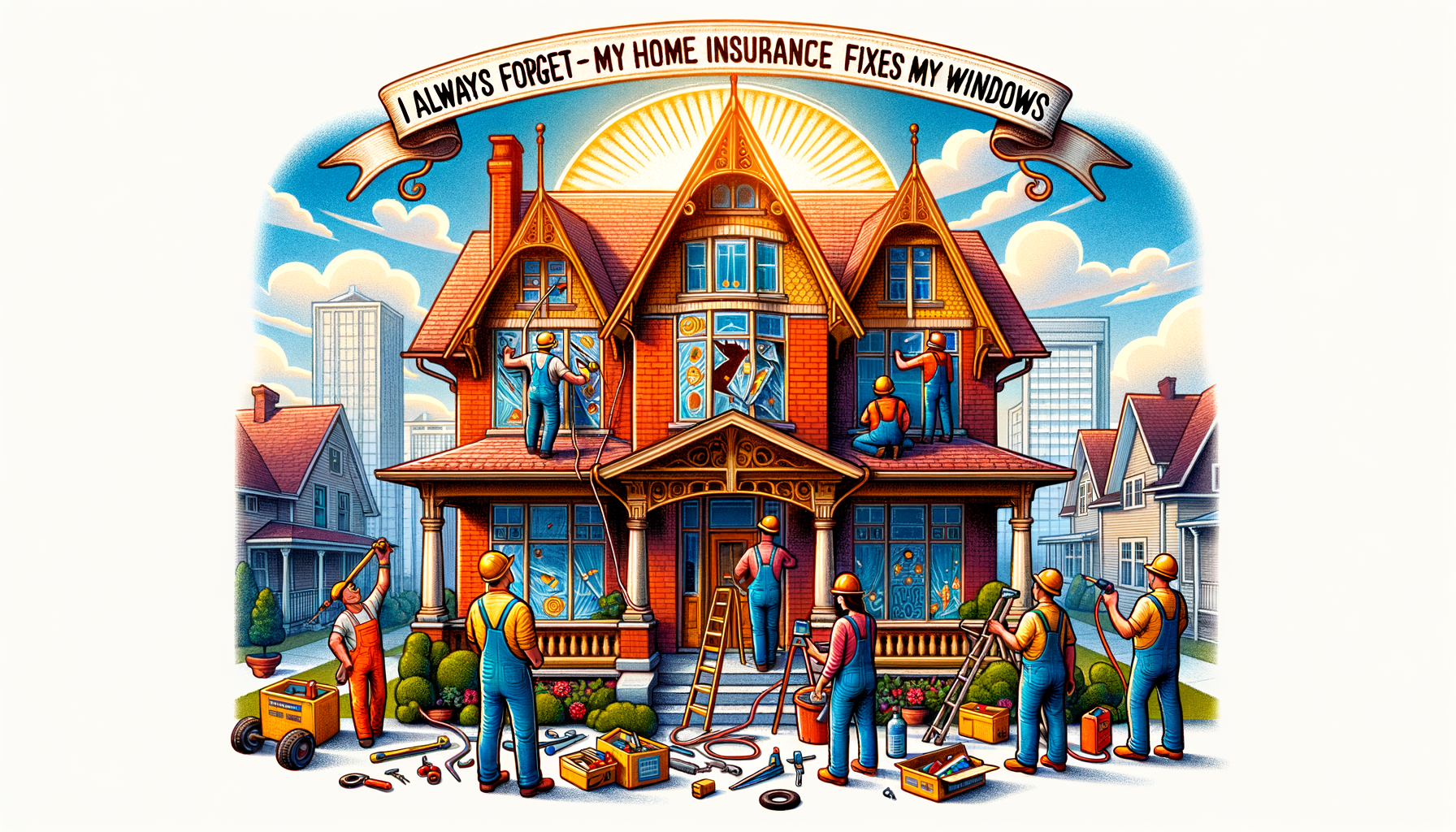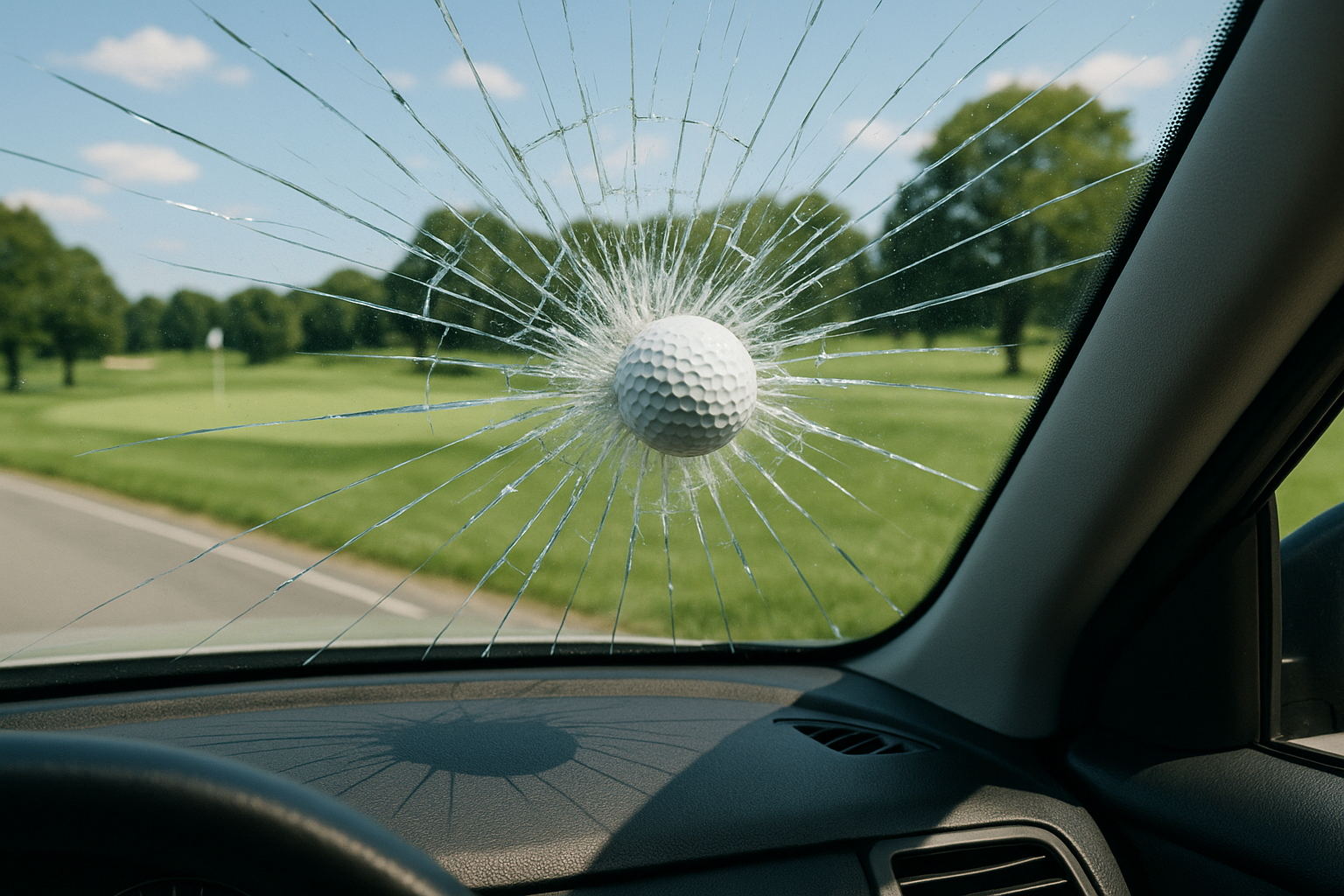If your home is nestled near a golf course, you know that birdies aren’t the only thing flying through the air; sometimes, it’s your neighbor’s Titleist shattering through your living room window. Whether you’re a golf lover or just unlucky in real estate, “I Fore Get How Often Home Insurance Fix My Windows” is your much-needed caddy for navigating the links between homeowners insurance, flying golf balls, and the glass that stands between you and the wild world of the 9th hole.
Shattered Dreams: Golf Balls vs. Your Windows
Nothing puts a divot in your day quite like the sound of breaking glass, especially when it’s your brand-new double-pane window falling victim to a rogue nine iron. For many homeowners living along a fairway, shattered windows are a rite of passage, a not-so-gentle reminder that golf is a game of inches (and sometimes, poor aim). What begins as a leisurely Sunday afternoon for a golfer can quickly turn into a frantic search for a local glazier’s number.
Your windows aren’t alone in their peril; patio doors, car windshields, and even sunrooms have felt the wrath of an overzealous backswing. Each shatter is another chapter in the unending rivalry between glass and the deceptively innocent white dimpled sphere. Sometimes, you may even catch the offending golfer sheepishly tiptoeing up to your porch, golf cap in hand, bracing for the inevitable apology (and possibly, the offer of a slightly squished check).
Homeowners living near golf courses often find themselves forming an unofficial club, trading stories of how far that “one guy on the 8th” managed to drive a ball straight through someone’s ceramic rooster collection. Insurance agents might even tell you that golf ball damage is so typical, they could almost set their watch by it in golf-friendly neighborhoods.
So, if you’re tallying up the scorecard of shattered windows over the years, remember: you’re not alone in the hazards. Homeowners litter the fairways with stories of glass-blown dreams. Moreover, if you’re lucky, replacement panes.
Par for the Home Insurance Course: Golf Mishaps Explained
Golf, they say, is a game of precision. Yet, for every Tiger Woods, there’s a gaggle of weekend warriors whose slices and hooks send balls careening into the unsuspecting civilian world. Living near a golf course is not just about lush views and early morning tee times; it’s about bracing yourself for that off-course ball that takes a detour through your bay window.
Mishaps can range from the spectacular, like the time Old Man Jenkins’ drive ricocheted off a tree and scored a direct hit on Mrs. Lenihan’s prized stained glass. To the mundane, like a gentle tap that somehow cracks just the right corner of your front window. Sometimes, the damage is cosmetic – an unsightly chip that mars your otherwise immaculate glasswork. Other times, it’s a full-on demolition worthy of its slow-motion replay.
What makes golf mishaps particularly galling is their sheer unpredictability. You could install the thickest, most state-of-the-art windows in the neighborhood, and yet, fate (and the local golf association) will always find a way. Forewarning: wind, rain, and the occasional tipsy tournament can turn your backyard into the Bermuda Triangle of errant golf balls.
In the end, these mishaps are par for the course, literally and figuratively. They remind us that with grand vistas comes significant vulnerability, and sometimes, even the most peaceful afternoon can be interrupted by an unexpected birdie through the glass.
Home Insurance Forethought: Are You Covered?
Ah, insurance. The authentic MVP when golf balls come crashing into your home. But here’s the rub: not all policies treat golfball-induced window carnage the same way. Homeowners’ insurance typically covers accidental damage, but “accidental” is in the eye of the adjuster. Cue the dramatic music as you call your agent to ask, “How many mulligans do I get before you drop me?”
Some insurance policies explicitly mention “perils” such as windstorm, vandalism, and the mysterious “acts of God,” but golf balls rarely get a starring role. You may need to check your policy’s fine print. Do they cover “projectiles” or “external impact”? If not, you might want to consider a little mid-policy shopping before tee-off season.
Living in a golf-centric community? Some insurers offer riders or add-ons for homes located near golf courses. These can provide much-needed peace of mind, ensuring your next golf ball saga is just an inconvenience, not a financial crisis. However, repeated claims may raise your premiums, or worse, your insurability. So please don’t make a hobby of it.
The lesson here: don’t be caught out of bounds when the next Titleist comes calling. Know your coverage, contact your agent, and consider keeping a spare window pane or two, just in case.
Chipping In: Filing Home Insurance Claims Without Losing Your Cool
So, a golf ball just exploded your window, and the dog is barking at a dimpled invader. What next? First, snap a few photos of the carnage. Evidence is your best friend, and adjusters love a good visual story. Next, secure the area; nobody wants a neighbor’s kid crawling through a broken window, except maybe your home insurance company’s lawyer.
Call your insurance company calmly and start the claim process. Stay cool and describe the events with precision: “Golf ball. Window. Kapow.” Refrain from adding, “I always hated the 12th hole anyway.” Leave the color commentary for your next neighborhood gathering.
Prepare for paperwork galore because claims rarely sail smoothly down the fairway. You might need to recount how often this has happened, provide repair estimates, and, if you’re unlucky, explain why you own ceramic rooster figurines in the first place. Fortunately, most adjusters have heard it all, so there’s no need to be embarrassed.
Above all, remember: patience and politeness can work wonders. You’re much more likely to get a speedy settlement if your claim doesn’t come wrapped in the frustration of a three-putt meltdown. Keep your cool, and soon, you’ll watch your window woes go out just as quickly as the golf ball came in.
Tee Time vs. Repair Time: The Waiting Game
Every golfer dreads the words “the group ahead is playing slow.” Homeowners dread “the repairman will be there between 8 a.m. and forever.” Filing a claim might offer hope, but it also triggers the infamous waiting game. Sometimes, it’s a swift birdie; other times, the process feels like hacking out of the rough with a putter.
After the initial call, the carrier may route, reroute, or review your claim. An adjuster will likely swing by to inspect the damage and, if you’re lucky, admire your creativity in using a beach towel as a temporary window cover. But even after the nod of approval, there’s still paperwork, payouts, and (finally) scheduling the repair.
The real test of your patience comes when repair availability clashes with your schedule. Or, worse, the next thunderstorm. Sometimes, supplies are backordered, or your favorite window guy is on the back nine for the third day in a row. If you’re in a golf-heavy area, you may find yourself at the back of the line, with glass shops working overtime during tournament season.
So, settle in, pour yourself a lemonade, and take solace in knowing that every broken window brings you one step closer to a repair-manship badge. Consider it a lesson in patience. One that every golfer and golf-adjacent homeowner must eventually learn.
Hole-in-One or Hole-in-Your-Wallet? The Real Cost
No matter how you slice it, window repair is never a welcome visitor to your wallet. Homeowners insurance can soften the blow, but deductibles, premium hikes, and potential policy exclusions are lurking in the rough. One errant golf ball might cost you a nominal fee; a season full of them could have you seriously contemplating blackout curtains (or moving).
The average window repair costs range from $200 to $600, but specialty glass or custom panes can drive up the price, and let’s not forget about those fancy French doors. Home insurance may cover the hefty bill, but you’ll likely pay the deductible, and repeated claims may haunt you like a persistent sand trap on your insurance history.
If your insurance gets wise to your “perpetual victim” status, they might raise your rates or even send you packing. Some neighborhoods have banded together to negotiate with golf courses or install protective netting—because, as it turns out, an ounce of prevention truly is worth a pound of glass shards.
Ultimately, every shattering golf ball is a gamble between burdening your home insurance or biting the bullet yourself. Choose wisely, weigh the long-term costs, and remember: sometimes, the only real way to win is by learning to avoid the risks.
Par For the Course
Living next to a golf course brings both beauty and unexpected hazards. Whether you’re dodging flying golf balls or tallying yet another home insurance claim, remember that a bit of humor (and perhaps a sturdier pane of glass) can get you through even the most frustrating of fairway follies. “Forget It!” Sometimes, home insurance is there to help, but in the end, it’s up to you to decide whether to swing for the claim or play it safe on the green. Now, tee up another lemonade, but keep it away from the windows.


